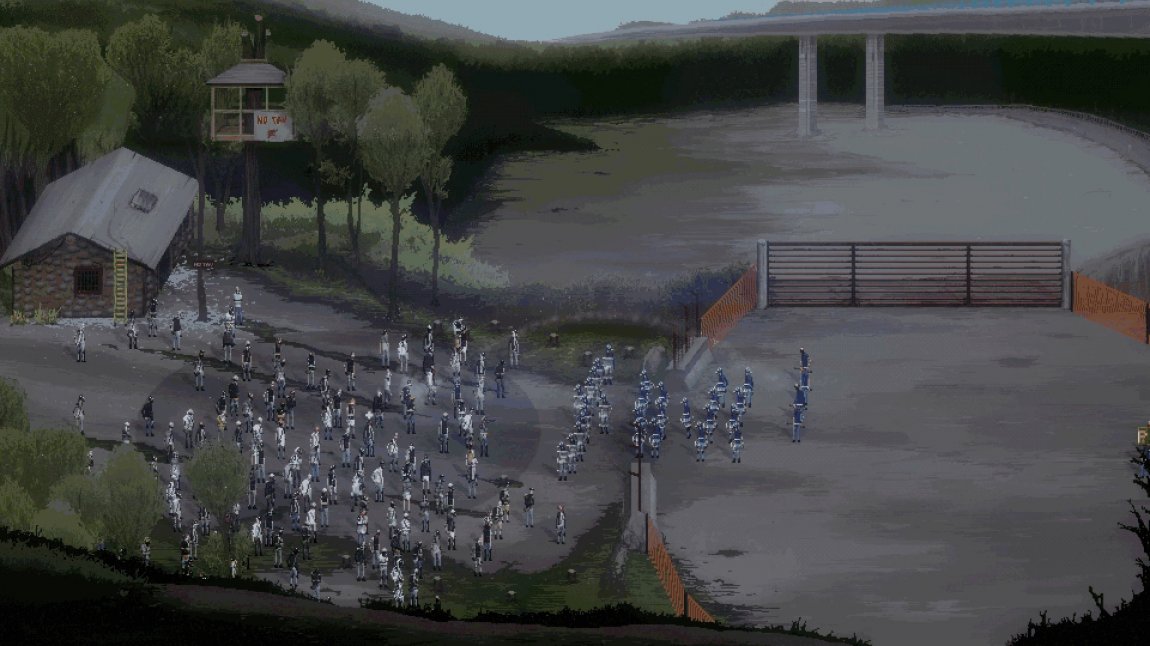From the successes of crowdfunding to Steam’s Early Access the road can be far more disrupted than one might think. The development of RIOT – Civil Unrest is a concrete example: born from the will of Leonard Menchiari, the title came out victorious from a campaign on Indiegogo in 2014 and then slowly lose track of himself until this year, showing before last editions of Svilupparty and Milan Games Week and then among the projects in Early Access hosted by the well-known platform of Valve.
We do not know what happened in the meantime, but it is clear that a production of this type requires more than a few forethought before actually being marketed. We are talking about an ” event simulator“which, thanks to the direct experiences of the author during the No TAV riot protest in Val di Susa, aims to show in the most limpid way possible what typically happens to the triggering of so-called urban guerrillas, all starting from a series of concrete cases, rendered playfully in the form of a real-time strategy game.
History teaches us … but who teaches us?
The starting point of RIOT is undoubtedly the single player campaign, where the player has the opportunity to follow in the desired order the unraveling of – for now – four scenarios focused on many historically relevant events: the aforementioned Italian event in Valsusa , the Arab Spring, protests in Keratea and the battle of the Indignados in Spain.
Speaking of numbers, the Early Access consists of sixteen stages, all playable both driving the deeds of protest groups and impersonating law enforcement. Each event begins with a synthetic explanation of the event, and each sub-chapter of each macro-level opens with a fleeting cut scene that introduces the actual action.
Before writing, however, it is worth spending a few words on the artistic production, which enjoys a pixel art of rare sophistication, strongly desired by Menchiari and curated by the good Fabrizio Zagaglia, recently also working on the local Slaps and Beans.
A graphic that, moreover, is well suited to the type of narration chosen to convey the information related to each event staged. An exposition of the facts where the visual force dominates that of the word, which is also present, but in the form of the almost indistinguishable voices of the many characters that crowd the screen before and during the scuffles. In this sense, it is commendable the enormous work of sampling of phrases and sounds played by the development team, where the audio mixing of cackles, shouts, radio interferences and ambient noise is able to realistically return that mixed disorder to tension that, inevitably, it occurs during these situations.
If on the side of the construction of the riot games contextit surpasses every rosy expectation, instead we have to go a little more cautiously talking about everything concerning its game system; system that, as written in the opening, evidently draws on the genre of the RTS.
Each chapter of the campaign, as we mentioned, can be completed both from the point of view of the policemen and that of the “rioters”, which first of all changes the setup steps that precede the hard and pure in-game. Giving its preference to the riot police costume forces, the software requires to compose up to six groups of men to be taken down in the field shortly, choosing between three possible types: ballistic team, tactics and assault.
Each team can also be customized in terms of weapons contested by their members and their defensive equipment, which translates into a monetary cost that will affect the power of the deployment and, in turn, the amount of rebels that the player will have to fight.
On the opposite side, deciding to drive the agitators, it will be necessary to set their characteristics according to the variables of their effective subdivision, the degree of anger, the quantity of banners and flags used and the defensive garments worn. Not to mention, here too, the numerous possibilities of choice relating to the instruments that can be used once taken to the streets, some really peculiar.
Consider, for example, the opportunity to exploit social networks to attract other protesters scattered around, or use photographs to capture police actions deemed particularly violent or illegitimate, so as to have an advantage in the chapters of successive games. Advantage that, in the case of both parties, is subject to two separate scores, one military and one political.

